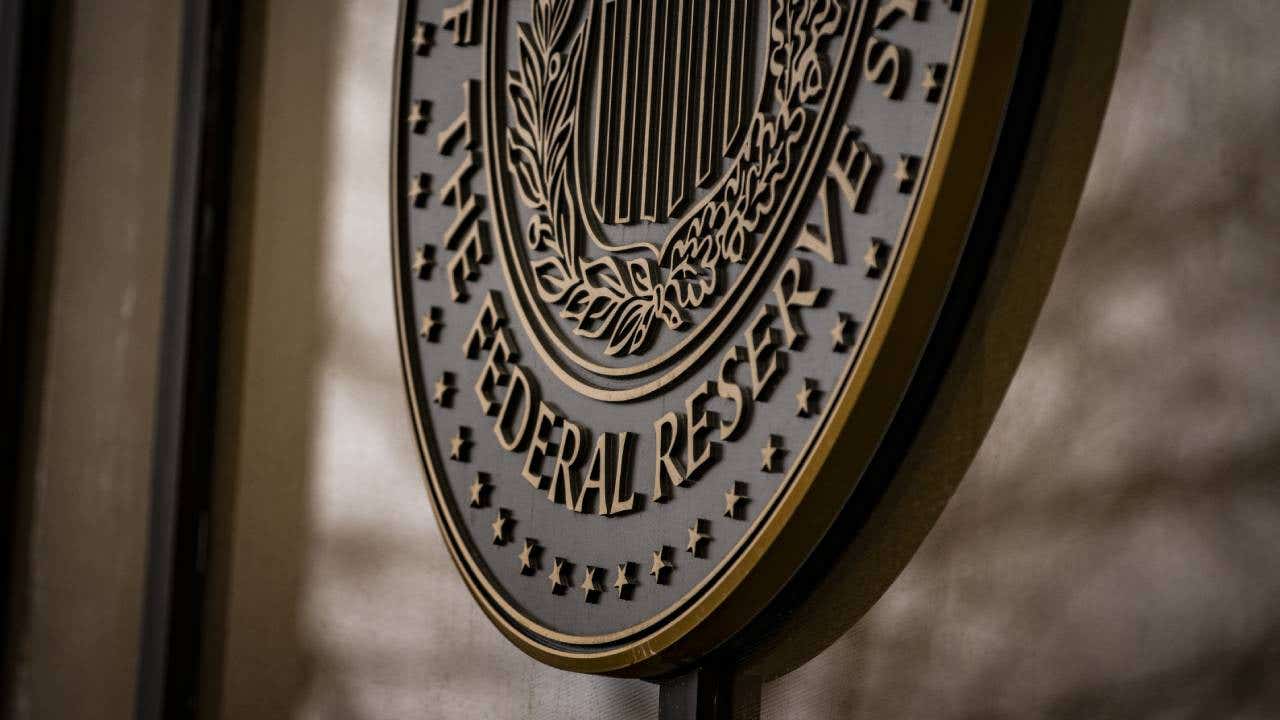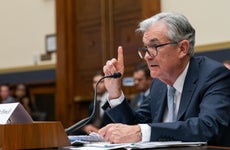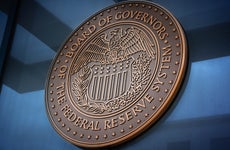Survey: Market pros see 10-year Treasury yield declining over the coming year

The Bankrate promise
At Bankrate we strive to help you make smarter financial decisions. While we adhere to strict , this post may contain references to products from our partners. Here's an explanation for .
Investment experts surveyed by Bankrate expect Treasury yields to fall over the next 12 months as interest rate hikes by the Federal Reserve are believed to be largely behind us. Bankrate’s Third-Quarter Market Mavens survey found that market pros expect the 10-year Treasury yield to decline to 4.36 percent a year from now, down from 4.59 percent at the end of the survey period on September 28, 2023.
Most of the survey’s respondents expect rates to be lower a year from now, with forecasts ranging from 3.4 percent to 5.25 percent.
“One big question is whether the era of super-low interest rates is over, and whether yields will be topping out,” says Mark Hamrick, Bankrate’s senior economic analyst. “There are huge implications at both the macro and micro levels, including businesses, central banks, governments and individuals.”
Forecasts and analysis:
This article is one in a series discussing the results of Bankrate’s Third-Quarter 2023 Market Mavens Survey:
- Survey: Despite economic uncertainty, experts foresee stocks climbing 6% in year ahead
- Survey: Market pros see 10-year Treasury yield declining over the coming year
- Survey: Will shifting Fed policy and the 2024 election help or hurt stocks? Here’s what top market analysts are saying
Analysts see 10-year yield falling over the next 12 months
The 10-year Treasury yield has spent nearly all of the past two decades below 5 percent, reaching record lows during the COVID-19 pandemic as the Fed sharply cut rates to support the economy. At its bottom, the 10-year yield hit about 0.50 percent in August 2020, but began to rise as the economy recovered. Rates rose steadily throughout 2022, as the Fed aggressively hiked rates to combat inflation. In early October 2023, the 10-year yield soared to almost 4.9 percent.
Investment professionals surveyed by Bankrate expect the 10-year yield to be 4.36 percent at the end of the third quarter of 2024, up from the 3.58 percent level they expected it to reach at the end of June 2024, as indicated in the previous survey.
The survey period ended after the Fed left rates unchanged at its September meeting, but signaled rates may need to stay higher for longer than previously expected.
The survey’s estimates have generally tracked the overall rise in interest rates, with forecasts increasing from 2.19 percent in the fourth quarter 2021 survey to 3.58 percent in the second quarter 2023 survey.
Some analysts see income opportunities in bonds
Interest rates have risen significantly over the past few years as the Fed looked to slow the economy and bring down inflation. But with an end to rate hikes possibly in sight, some investors think bonds are attractively priced.
“With the arrival of higher rates, there are finally some more attractive income-oriented alternatives that carry less risk and offer an opportunity to strike a better balance and to lower risk in investment portfolios,” says Patrick J. O’Hare, chief market analyst at Briefing.com.
“We think there’s at least one more hike, and then they will be slow to cut,” says Sameer Samana, senior global market strategist at Wells Fargo Investment Institute. “We would favor bonds and commodities over stocks while favoring the short- and long-term parts of the fixed income curve.”
Dec Mullarkey, managing director at SLC Management, sees a dilemma for fixed income investors. Should you lock in higher rates in long-term bonds, but risk further declines if bonds continue their march upward? Of course, those same long-term bonds will get a boost if rates were to fall.
“Absent a target duration or strong conviction on rate moves, a reasonable response is to spread your investment across a mix of maturities,” Mullarkey says. “This laddered approach will provide decent income and the opportunity for gains when rates move in your favor.“
Methodology
Bankrate’s third-quarter 2023 survey of stock market professionals was conducted from Sept. 21-28 via an online poll. Survey requests were emailed to potential respondents nationwide, and responses were submitted voluntarily via a website. Responding were: Sameer Samana, senior global market strategist, Wells Fargo Investment Institute; Hugh Johnson, chief economist, Hugh Johnson Economics; Sonu Varghese, Ph.D., global macro strategist, Carson Group; Dec Mullarkey, managing director, SLC Management; Charles Lieberman, managing partner and chief investment officer, Advisors Capital Management; Marilyn Cohen, CEO, Envision Capital; Clark A. Kendall, CFA, AEP, CFP, president and CEO, Kendall Capital; Robert A Brusca, chief economist, Fact and Opinion Economics; Patrick J. O’Hare, chief market analyst, Briefing.com; Kenneth Chavis IV, CFP, senior wealth counselor, Versant Capital Management; Kim Forrest, chief investment officer/founder, Bokeh Capital Partners; Brad McMillan, chief investment officer, Commonwealth Financial Network; Michael K. Farr, CEO, Farr, Miller & Washington; Sam Stovall, chief investment strategist, CFRA Research; Chuck Carlson, CFA, CEO, Horizon Investment Services.
Editorial Disclaimer: All investors are advised to conduct their own independent research into investment strategies before making an investment decision. In addition, investors are advised that past investment product performance is no guarantee of future price appreciation.
Related Articles

Survey: Expect 10-year Treasury yield to approach 4% over the next year, pros say

Survey: Investment experts see 10-year Treasury yield falling over the next year

Survey: Experts see 10-year Treasury yield falling over the next year

Survey: Market pros see 10-year Treasury yield flat one year from now